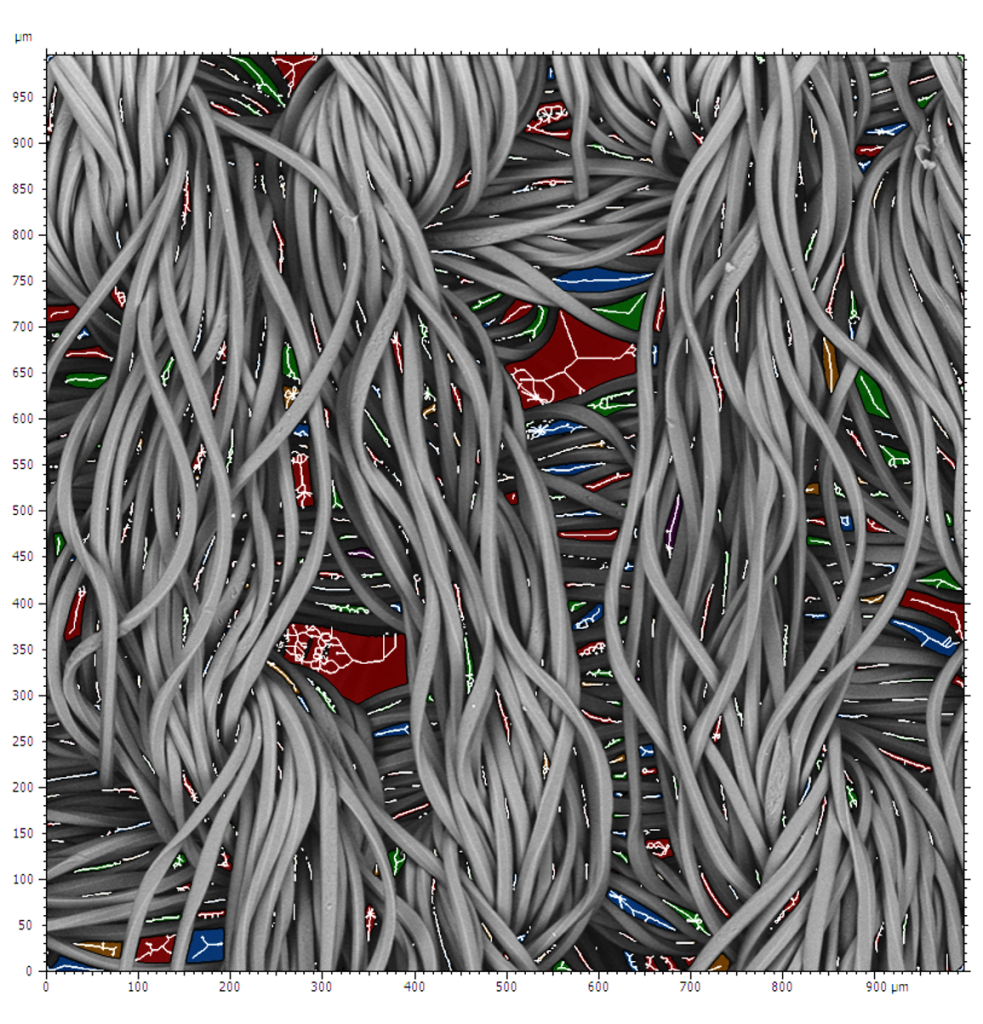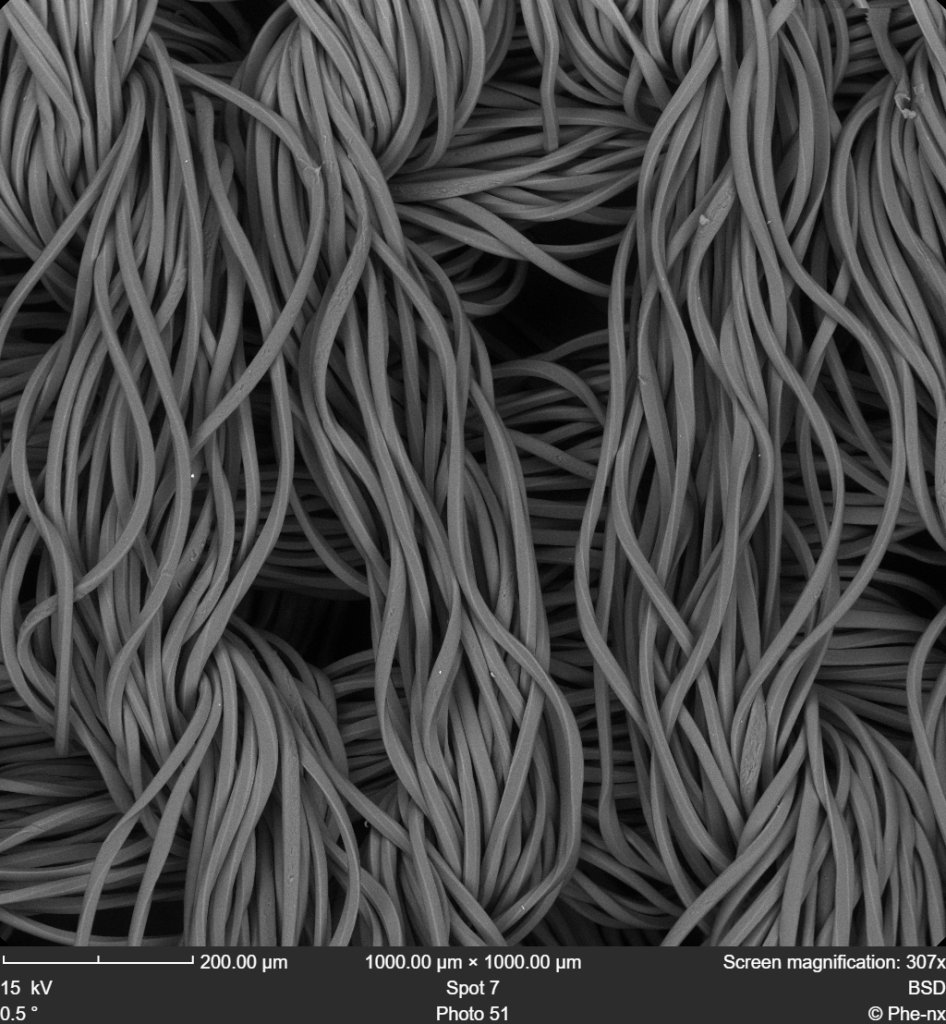Nylon polymer pore analysis
Nylon is a synthetic polymer known for its strength, durability, and versatility, widely used in textiles, engineering plastics, and numerous industrial applications. The nylon sample analyzed here showcases the complex microstructure of intertwined fibres and the pores formed between them, as seen in Figure 1.
The NANOS tabletop SEM allows us to investigate these intricate fibre networks at high resolution. Using the low-vacuum mode, we can image the non-conductive nylon sample without the need for conductive coatings, preserving its natural state. The images were recorded using the backscatter detector (BSD), which provides excellent material contrast and highlights the differences between the fibres and the pores.
As observed in Figure 1, the nylon fibres create a mesh-like structure with pores of varying sizes distributed throughout. To quantify these pores, we performed a detailed pore analysis using Mountains® software as can be observed in Figures 2 and 3. This analysis measured the area, perimeter, radius, and diameter of the pores nestled between the nylon fibres.
The pore size and distribution are critical factors influencing the material properties of nylon. According to the analysis, the average area of the pores is approximately 24.60 µm², with an average perimeter of 12.11 µm, as shown in Figure 3. The equivalent diameter of the pores averages around 1.90 µm, which can significantly affect the permeability and filtration efficiency of the material. The perimeter and area measurements provide insights into the pore shapes, which are generally irregular due to the random arrangement of the fibres.
Understanding the pore structure is essential for applications where fluid flow through the material is required, such as in filtration membranes or breathable fabrics. The ability to control and optimize pore size can lead to enhanced performance in these applications.
This interaction between the nylon fibres and the pores is not just a matter of structural interest; it has practical implications for developing advanced materials. By manipulating the fibre arrangement and pore characteristics, manufacturers can create nylon materials with specific properties tailored to particular needs.


